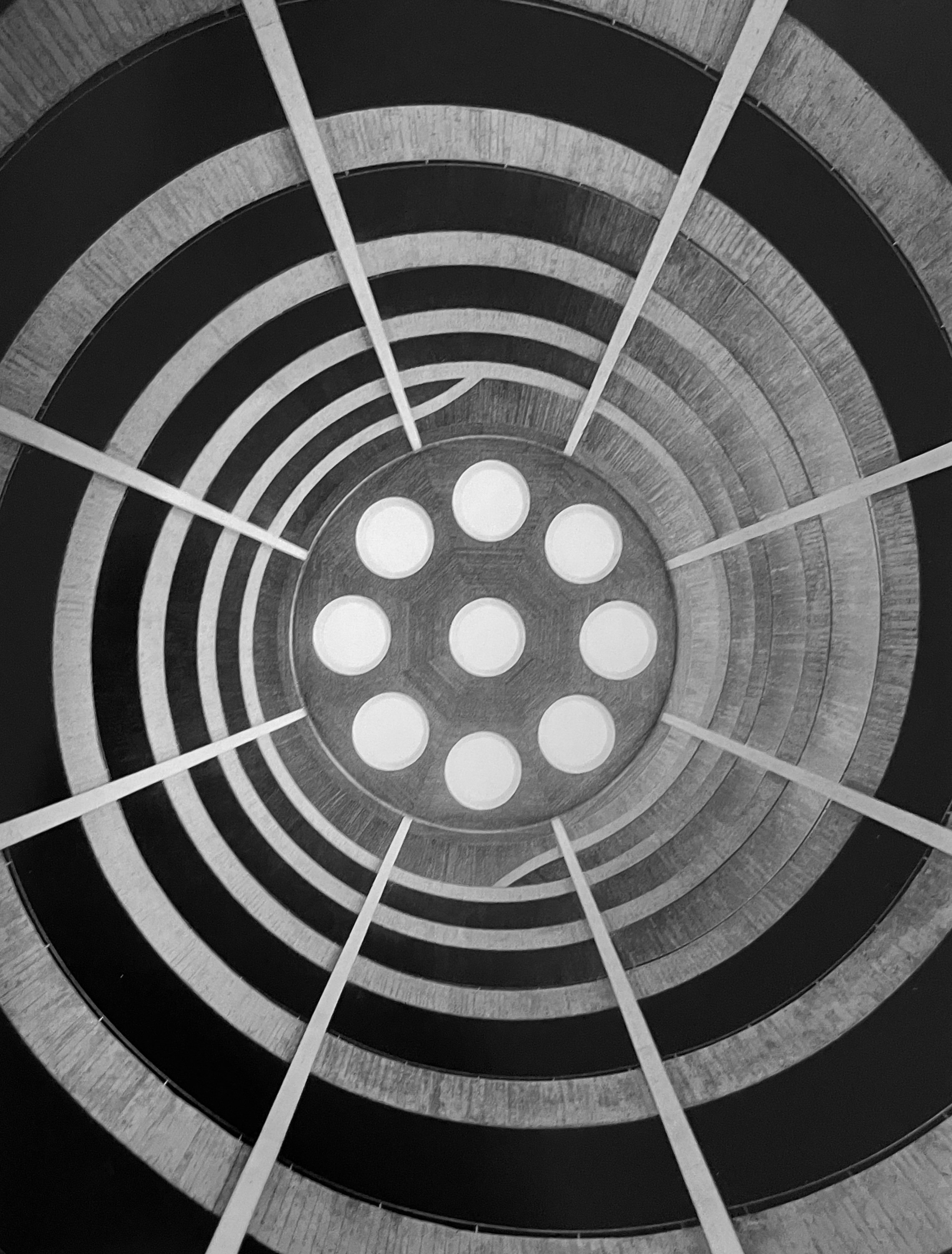
PanGallery
Heinrich Heidersberger
This year, the PanGallery at KunstRaum Bernusstrasse is presenting Heinrich Heidersberger. Born in Ingolstadt on June 10, 1906, Heidersberger stands for German architectural and advertising photography of the 1950s and 1960s like almost no other photographer. His experimental, artistic works, such as his rhytmograms, inspired the exhibition organizers. His photographs of the Jahrhunderthalle in Frankfurt, the Osram administration building and the Volkswagen AG power station are icons of architectural photography and helped him achieve his international breakthrough. The exhibition is curated by Rudi Feuser, PanGallery and Bernd Rodrian, Institut Heidersberger.
Heidersberger, the avant-gardist: According to art historian Barbara Steiner, the photographer Heinrich Heidersberger was a "'modernist' par excellence", because "like the artistic avant-garde", he attempted to "reconcile economy and culture, industry and humanist ideals, technology and democracy with the help of new technical and economic achievements". This perfectly sums up what makes his photographic oeuvre so special: the coexistence of applied and free photography.
Heidersberger, who was born in Ingolstadt on June 10, 1906 and found his way to Wolfsburg via stops in Linz and Graz, Paris, The Hague and Copenhagen, Berlin and Braunschweig, also knew how to give free rein to his creativity in commissioned photography. His flair for architectural staging, striking visual axes and precise compositions quickly helped him to make a name for himself among the architects of the "Braunschweig School", but at the same time he also knew how to convince a wide variety of clients in advertising photography. The contacts he made with the French surrealists during his art studies in Paris, as well as his technical interest and know-how, shaped his free works. Among the best known of these are his rhythmograms, Lissajous figures, which he created with a specially constructed light pendulum machine, and his series of pictures Dress of Light, for which he used a light cannon to project perforated and lamellar templates onto the naked skin of a female nude. According to Professor of Design Theory and Design History Rolf Sachsse, Heidersberger's work is characterized by his interest in the "entire production process" and not just the final "result, which then possibly museumizes itself as an eternally durable object". In this way, the photographer proves himself to be a "modernist, a true avant-gardist - and that's all you can become in the 20th century".
"Let us admire, even if we do not understand", wrote an enthusiastic Jean Cocteau about Heidersberger's rhythmograms in a letter addressed to him in 1962. The French writer and film director, by then already a member of the Académie française, interpreted the results of the machine, which the photo artist had designed and constructed himself in the 1950s, as "proof that chance does not exist for poets, or rather that they give it another name". While at the same time Oskar Kreisel and Peter Keetman were also creating light images using experimental techniques and pendulum swings, it was the expansive apparatus of the rhythmograph that Heidersberger used to cheat chance: once set in motion, this photographic drawing machine generated light-track images of extreme complexity via a long exposure. The dynamic vibrations fixed on them create two-dimensional objects with a three-dimensional effect. His frequently exhibited photographs of oscillating light were awarded a silver medal at the XI Milan Triennale in 1957. Heinrich Heidersberger converted a cooking pot into a mobile spotlight for the group of works "Dress of Light", which was first published in 1949 in the magazine "Stern". He used this light source to photograph female nudes, but dressed the women's bodies with patterns of light and shadow. As his studio was located close to the first editorial offices of the magazine "Stern" in Hanover, Henri Nannen became aware of Heidersberger and the "dress of light" theme and published it. Further commissions for the magazine followed.
Heidersberger is also known for his architectural and industrial photography. In order to avoid losing his citizenship, he returned to Germany in 1936 and met the architect Herbert Rimpl, who had him photograph the Heinkel aircraft factory in Oranienburg. Heidersberger spent the war years as head of the photo department at the steelworks in Salzgitter, whose architect was also Rimpl. In the post-war years, he documented the heavily destroyed city of Braunschweig and its reconstruction. His clients now included the architects of the Braunschweig School, including Friedrich Wilhelm Kraemer, Walter Henn and Dieter Oesterlen. Heidersberger also photographed works by the Finn Alvar Aalto and Hans Scharoun's theater in Wolfsburg. In the years of reconstruction from 1950 to 1960, Heidersberger further perfected his architectural photography knowledge and skills to create an unmistakable visual language. It is characterized by a black sky and brilliant contrasts. Facade surfaces become graphic without losing their functionality. Impressive examples of this are the photograph of the Volkswagen AG car factory from 1971 or the Jahrhunderthalle in Frankfurt Hoechst reflected in a puddle.
Exhibition
Heinrich Heidersberger
Form.Structure.Light_Photographies
Sep 05 - Oct 12
Contact
Rudi Feuser
Bernusstraße 18
60487 Frankfurt am Main
pangallery.de
pangallery@feuser.de



